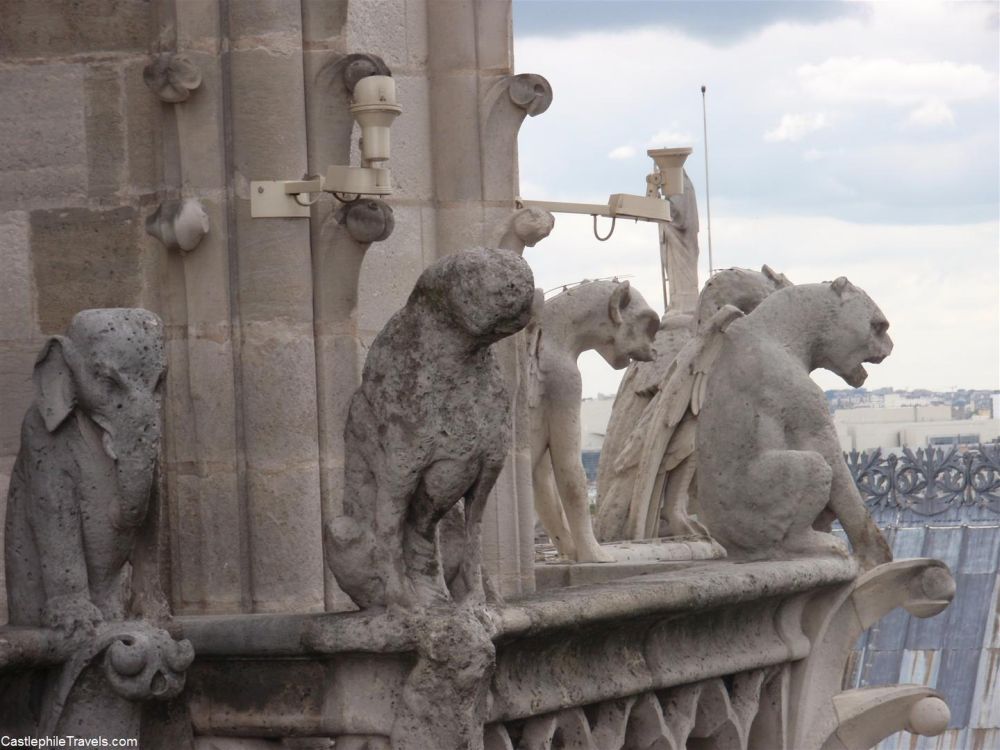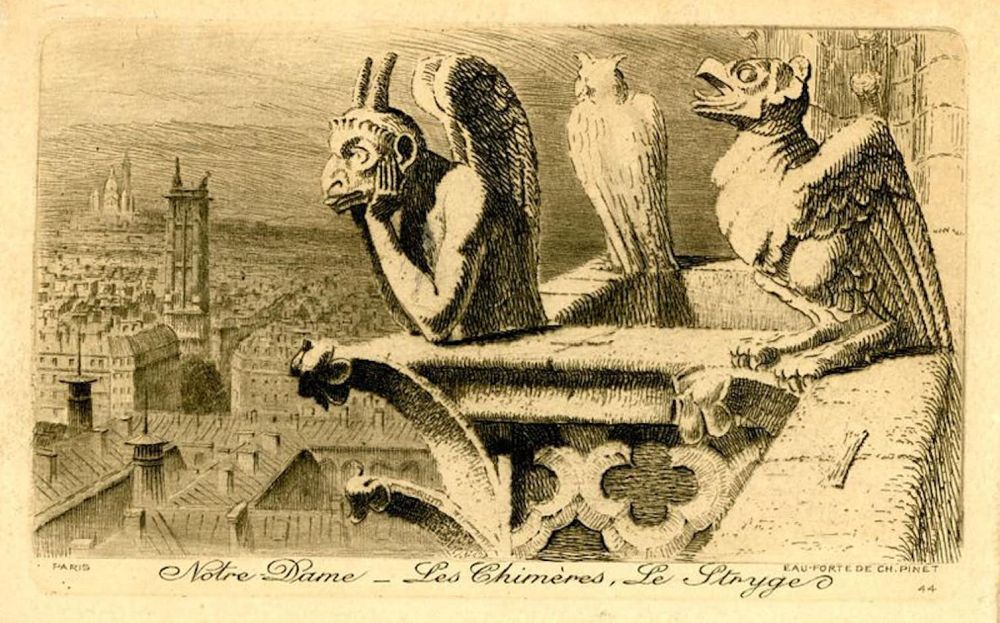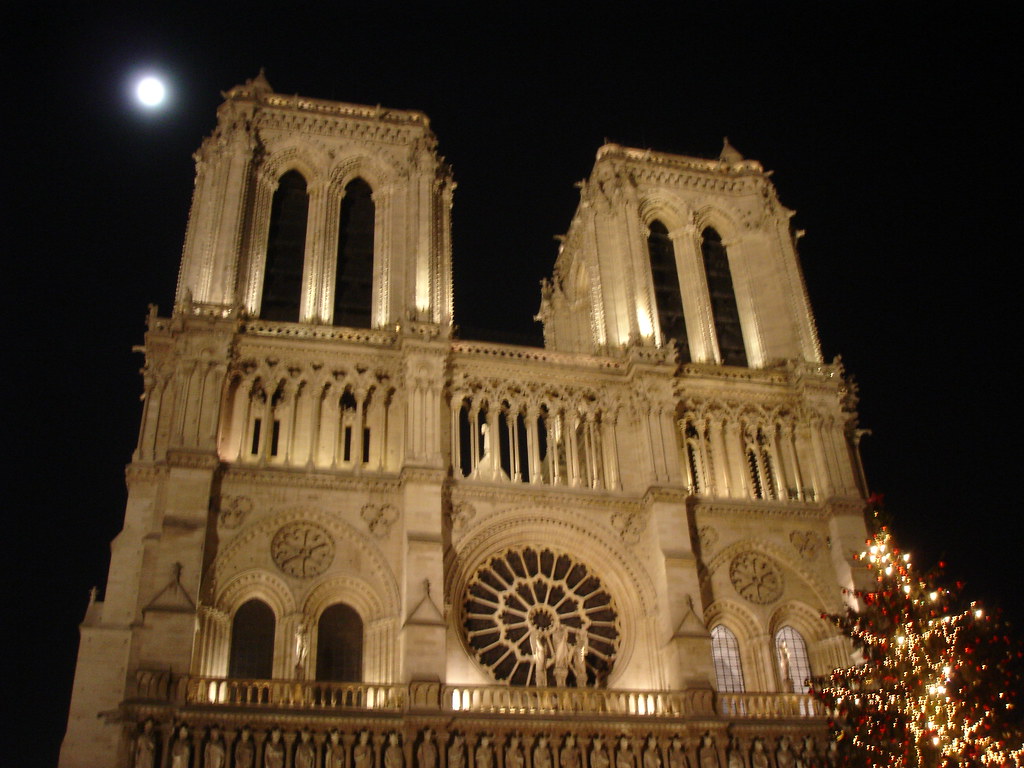Discover the captivating tales surrounding Le Stryge, a mysterious and alluring grotesque perched on the balustrade of Notre-Dame Cathedral in Paris, France. Unlike traditional gargoyles, Le Stryge, also known as “The Vampire” or “The Spitting Gargoyle,” doesn’t serve a functional purpose but instead belongs to the family of chimeras, ornamental sculptures that adorn Gothic structures.

Crafted during the 19th-century restoration of Notre-Dame under architect Eugène Viollet-le-Duc, Le Stryge’s design draws inspiration from medieval bestiaries, portraying owls as symbols of wisdom and, simultaneously, as harbingers of evil. This duality is reflected in Le Stryge’s contemplative gaze and monstrous features.

One of its distinguishing features is its melancholic and reflective demeanor, setting it apart from other grotesques on Notre-Dame. This human-like figure, positioned between the sculptures of Adam and Eve, symbolizes the eternal struggle between good and evil.

While not directly linked to specific legends, Le Stryge has sparked the imagination of artists and writers. Notably, Victor Hugo’s “The Hunchback of Notre-Dame” portrays it as a peculiar character, forming a friendship with the novel’s hunchback protagonist, Quasimodo. Artists like Max Ernst have drawn inspiration from Le Stryge’s melancholy, incorporating it into surrealist works that delve into contemplation and comfort.

The 2019 Notre-Dame fire brought Le Stryge into the spotlight, as images of the grotesque spread on social media, becoming a symbol of perseverance and optimism amidst the cathedral’s devastation. Beyond being a stone carving, Le Stryge transcends to become a gateway into the human mind, a testament to the enduring power of art and symbolism.

